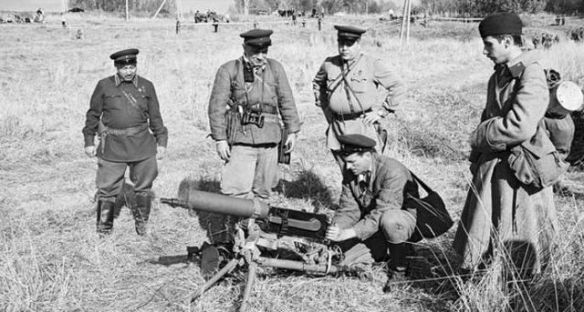Zagradotryady were Red Army troops positioned in the immediate rear of frontline combat troops to block mass desertion and to shoot stragglers, or anyone else who could not explain why he was there and not at the front killing Germans. Sharpshooters and machine gun crews picked off would-be mass deserters, while firing squads dealt with individual stragglers. Discipline was enforced by the harshest means to prevent mass desertion, panic, and surrender that threatened to lead to strategic defeat. The role of Zagradotryady was thus expanded during the great crisis of mass surrenders in the opening months of the German invasion. Too many had surrendered overly easily in 1941; more would do so in the first half of 1942. As historian Evan Mawdsley aptly put it, Soviet soldiers at that time were “demoralized troops in a demoralized society.” On September 12, 1941, Joseph Stalin and the Stavka therefore issued a harsh directive establishing “blocking detachments.” Their role was only strengthened by his July 28, 1942, Order #227.
The men of blocking detachments were drawn directly from Red Army units. They were not NKVD troops, but operated under NKVD control and in the shadow of their own potential execution by Red Army officers or by the NKVD. Behind dragooned detachments of Zagradotryady were still harder NKVD troops and firing squads, ready to shoot even senior officers or any Zagradotryady who failed to do their duty as defined by the Stavka and by Stalin. The Stavka issued orders to reduce the number of executions from October 1941, cautioning that officers should instead try to persuade men to stand and fight. Recruitment of krasnoarmeets from regular units into blocking detachments was ended one year later. Thereafter, NKVD troops alone filled the enforcement role of Order #227, with their usual utterly ruthless disregard for individual pleadings or special cases. Such extraordinary measures were continued even after the open wound of mass surrenders by Red Army soldiers was stanched. That was because suspicion remained among the NKVD, and in Stalin’s mind, that too many Ukrainians, Belorussians, Poles, and Balts were actively hostile to the Soviet system—which many of them were—and hence could not be trusted to fight. Blocking detachments were finally disbanded in October 1944, as final victory came into view.
